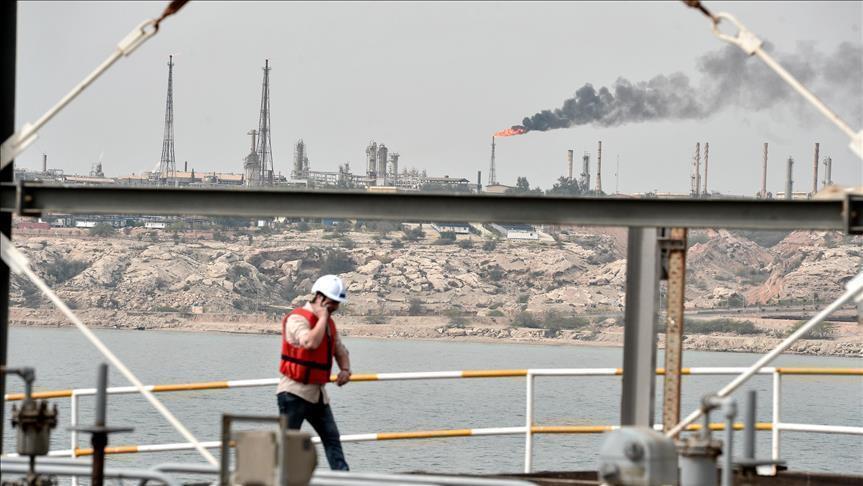Turkey has entered a new energy era by introducing hydraulic fracturing for oil and natural gas production in previously inaccessible resources.
President Recep Tayyip Erdogan announced Saturday that Turkey had begun using this method to produce commercial crude oil in the southeastern province of Diyarbakir, a first in the country's history.
If the method is applied successfully and start to be used widespread across Turkey, it would lower the country's oil and natural gas export volumes, and lower Turkey's energy import bill.
Turkey consumed around 1 million barrels per day (bpd) of oil in 2017 and 2018, according to BP Statistical Review of World Energy 2019. The country, however, produced around 49,000 bpd of oil in 2017, Turkish Petroleum data showed.
The method, which launched the U.S. to the world's top spot in oil and gas production in the last decade, could help Turkey produce domestic oil and gas, mitigate its hydrocarbon imports and lower its energy bill.
Hydraulic fracturing, also known as fracking, uses water and chemicals pressured under the land to form cracks in deep-rock formations from which shale oil and shale gas can freely flow to the surface.
Fracking taps "vast oil and natural gas reserves that previously were locked away in shale and other tight-rock formations," American Petroleum Institute (API) said on its website.
"Safe hydraulic fracturing is the biggest single reason America is having an energy revolution right now, one that has changed the U.S. energy picture from scarcity to abundance," it said.
With new technological advancements, such as cloud computing and artificial intelligence, fracking could allow oil and gas production to become less costly compared to conventional hydrocarbon production methods, as seen in the U.S.' current "Shale 2.0 revolution."
The Shale 2.0 revolution refers to a method that oil companies apply to produce more oil more cheaply with new technologies. It involves the re-fracking of existing wells using techniques that did not exist when the wells were initially drilled. Blasting water, sand and chemicals down older shale wells that have already been fracked will crack the rock, which lets oil and gas flow up to the surface.
Over the last five years, Canadian firm Valeura Energy has used fracking in Turkey's northwestern Thrace region. The company has been applying hydraulic fracturing, horizontal drilling and 3-D seismic survey in several wells to develop unconventional natural gas.
-US surpasses Saudi Arabia and Russia in oil, gas output
The U.S. managed to increase its shale oil and gas production very rapidly over the last 10 years using fracking. At the end of 2018, its crude oil production surpassed two heavyweights, Saudi Arabia and Russia.
Hydraulic fracturing became widely used in the U.S. in 2008 when the country's crude oil production averaged only 5 million bpd, according to the U.S.' Energy Information Administration (EIA).
Crude oil production in the U.S. quickly escalated to 5.48 million bpd in 2010, reached 6.5 million bpd in 2012, increased to 8.8 million bpd in 2014, and soared to a domestic record high of 10.99 million bpd in 2018, essentially doubling in a decade.
The U.S., recognized as the world's largest oil consumer, also managed to lower its crude oil imports over that period. In 2008, the U.S.' crude oil imports averaged 9.8 million bpd, and these fell to 7.3 million bpd in 2014, marking a 25% decline over these years.
Fracking also paved the way for the U.S. to increase its crude oil exports.
- U.S. exports of crude and gas rise
After lifting a self-imposed ban in late 2015, the U.S.' crude oil exports rose from 465,000 bpd in 2015 to 591,000 bpd in 2016, and this later soared to 1.16 million bpd in 2017 and 2.05 million bpd in 2018, according to EIA data.
Thanks to fracking, the U.S. also saw a rapid increase in domestic natural gas production, which allowed the country to become a major liquefied natural gas (LNG) exporter in the global gas market.
The country's natural gas production totaled 546 billion cubic meters (bcm) in 2008, according to BP Statistical Review of World Energy 2019, and this amount jumped to 832 bcm in 2018, recording a 52% increase over the last 10 years.
The U.S.' LNG exports amounted to 5.1 billion cubic meters (bcm) in 2016 but climbed to 19.4 bcm in 2017, and last year the volume shot up to 29.7 bcm, according to the EIA.
Fracking has also contributed to the escalation of U.S. LNG exports, which are estimated to increase by more than 100 bcm by 2024, according to the International Energy Agency (IEA).
Hydraulic fracturing and horizontal drilling methods are also widely used in Canada and China as well as the U.S.
By Ovunc Kutlu
Anadolu Agency
energy@aa.com.tr


